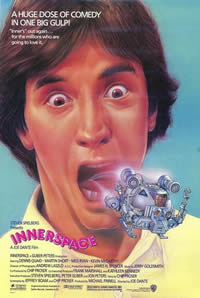
In this week alone, I've received two articles from friends and colleagues informing me on the latest in a string of bad news from the US.
The first article was about Thermogenesis recalling 7,000 of its latest disposable bags custom designed to be used with the automated AXP device, used to process cord blood for stem cell separation.
WHAT'S THE PROBLEM?
Thermogenesis apparently failed to perform a quality control procedure on every shipment of the Auto-Xpress units from the time that the product first went on the market in 2006 up until now. The CEO, Willaim Osgood, who joined after the product went on the market, launched the recall after an internal audit found the flaw which was against the federal laws.
The flaw was the failure to perform quality control test for pyrogens (substances which cause fever, including bacterial toxins), which was omitted from the company's operating procedures.
This is one of my concerns in using any new products, as mentioned in my previous blog entry. It's always a real worry when products have problems and the service provider has to explain it to the clients. This is one of the reasons why we're evaluating if moving from a time trusted method to technology 1.0 is something that our clients would accept. Admittedly, cord blood stem cell clients need to be made aware of these concerns too.
WHAT'S BEING DONE ABOUT IT?
The CEO has admitted that "it was a mistake" on Thermogenesis's part and is now working with customers to retroactively test the Auto-XPress units, while the US FDA recommends that any cord blood units already stored be labeled as such so that they will be able to trace any problems if the unit is required for transplant.
According to the article:
There is currently no way to test whether a frozen cord blood sample is contaminated, according to the FDA recall notice. ThermoGenesis is in the process of validating a way to test for contaminants after a sample has been thawed.
While the AutoXpress sales accounts for 25% of Thermogenesis's USD 5.5 million revenue (making it the fastest growing product in the 22 year old company's history), its not the first problem with the bags due to the false-negative results in the first round which delayed shipments. This has depressed the company's share price (NASDAQ:KOOL) down by 6% to USD 1.53.
The AutoXpress bags are manufactured at an outsourced facility in Pennsylvania and the bags are tested at another outsourced facility.
GE Healthcare's Amersham division in Sweden signed an exclusive 15-year distribution deal with Thermogenesis to supply the AutoXpress system worldwide last October.
THE THERMOGENESIS REVENUE STREAM
The bulk of Thermogenesis's AutoXpress sales is currently from Cord Blood Registry (CBR) which collects and processes the majority of cord blood units in the US, though financial arrangements between them and Thermogenesis are not disclosed. The New York Cord Blood Bank also utilizes Thermogenesis's AutoXpress and I wonder how many units were used in public collections since June last year.
Thermogenesis predicts that first year revenue should be about USD 4 million with USD 50 million in total. Based on this number, between CBR, NYCBB and a smattering of other users around the world, approximately 35,000 to 40,000 AutoXpress units would have already been used for cord blood stem cell storage.

WHAT PROMPTED THE 143 MILLION KG BEEF RECALL?
The second news article was the US Beef recall that was sent to me via email... if you havent' already seen the nasty video and would like to see what prompted the recall, you can watch it here.





